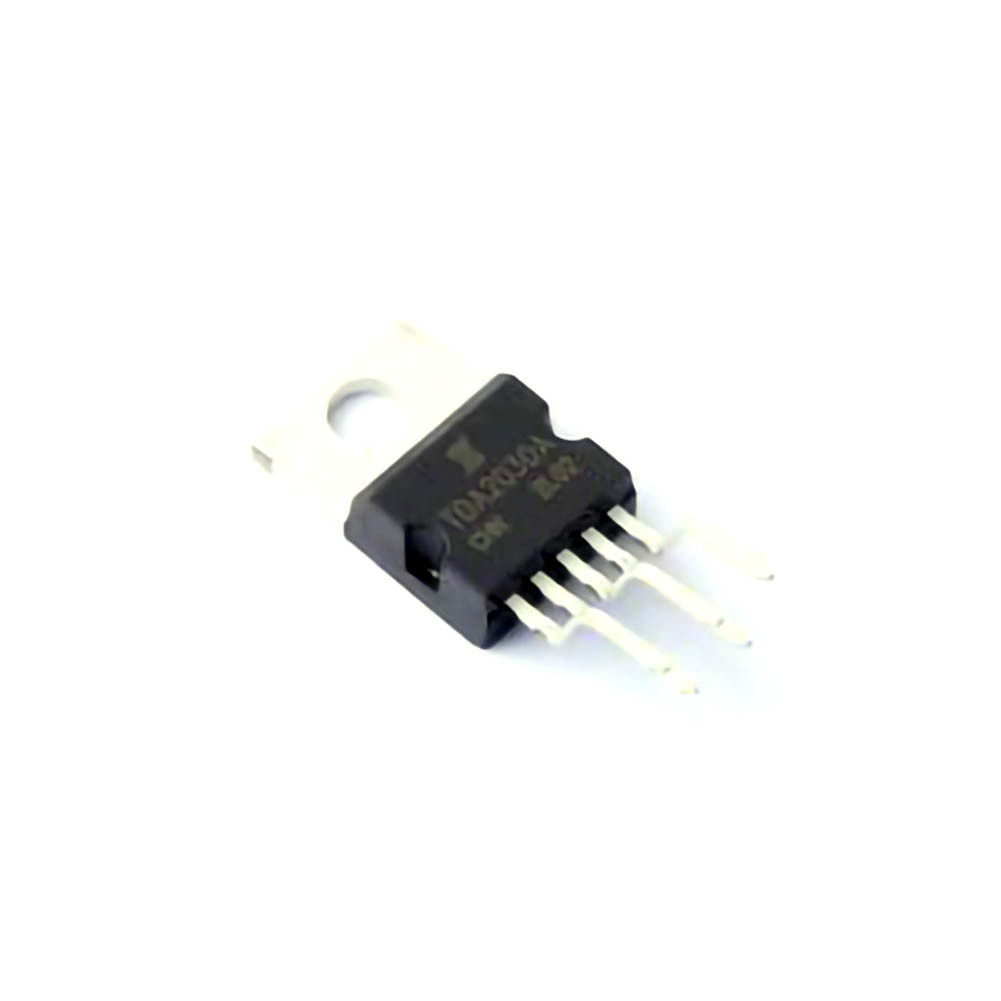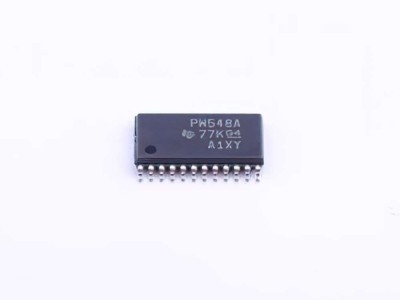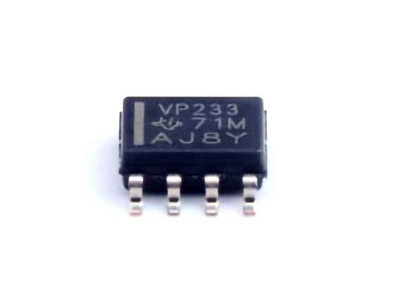
Understanding the TDA2030 Audio Amplifier Design
The TDA2030 is a classic audio amplifier IC used in a variety of audio systems, ranging from home theater systems to DIY audio projects. Its popularity stems from its robustness, affordability, and ease of use. This part of the article will explore the key aspects of the TDA2030's circuit design, including its features, operation principles, and the foundational components required for building a quality amplifier.
What Is the TDA2030?
The TDA2030 is a monolithic integrated circuit developed by SGS (now STMicroelectronics) designed specifically for audio amplification. This IC is widely used in low-to-medium- Power audio applications. The TDA2030 operates in a class AB configuration, which allows it to deliver high-quality audio output while maintaining efficiency.
The TDA2030 offers several important features that make it a preferred choice for both beginners and experienced audio engineers:
Output Power: It provides up to 35W of continuous output power into an 8Ω load with a ±14V power supply.
Low Total Harmonic Distortion (THD): It has a low THD of around 0.1%, which is crucial for maintaining the integrity of the audio signal.
Protection Features: The IC comes with built-in short circuit protection, thermal shutdown, and safe operating area protection.
Given these characteristics, the TDA2030 is ideal for use in audio systems where sound quality and reliability are paramount. Whether you're building a DIY audio amplifier or designing a commercial product, understanding the circuit design of the TDA2030 is the first step toward achieving optimal audio performance.
Basic Circuit Design of the TDA2030 Amplifier
To better understand how the TDA2030 works, it's essential to break down its basic circuit design. The standard application circuit for the TDA2030 includes a few critical components that are necessary for the amplifier’s functionality. Here’s a basic outline of the design:
Power Supply: The TDA2030 operates with a dual power supply, typically ±14V or ±18V. The power supply needs to be stable and capable of delivering the required current for the amplifier to function properly. Voltage rails should be well-filtered to avoid ripple that could affect audio quality.
Input Stage: The input signal is fed into the amplifier through a coupling capacitor . This capacitor serves to block any DC offset that might be present in the signal source. Additionally, an input resistor is used to provide the appropriate impedance for the signal source.
Feedback Network: The TDA2030 uses a feedback loop to maintain stability and prevent distortion. The feedback network is crucial in determining the overall gain and frequency response of the amplifier. Careful design of the feedback components—resistors and Capacitors —ensures that the amplifier operates within the desired frequency range.
Output Stage: The TDA2030 drives the output transistor s, which ultimately power the speakers. The output stage is designed to handle the power delivered by the IC, ensuring that the speaker receives a clean, undistorted audio signal.
Decoupling Capacitors: To ensure stable operation, decoupling capacitors are placed near the power pins of the TDA2030 to reduce noise and prevent oscillations. These capacitors help maintain the integrity of the signal by filtering out high-frequency noise.
Protection Features: Built-in thermal and short-circuit protection ensures that the TDA2030 remains safe under various operating conditions. If the temperature of the IC exceeds a certain threshold, or if a short circuit occurs at the output, the amplifier will enter a protection mode to prevent damage.
Key Considerations in TDA2030 Circuit Design
While the basic circuit design is relatively straightforward, there are several factors that can influence the performance of the TDA2030 amplifier. By paying close attention to these design aspects, you can optimize the amplifier’s sound quality and overall performance.
Power Supply Quality: The quality of the power supply plays a significant role in the performance of the TDA2030. A poorly filtered power supply can introduce hum and noise into the audio output, which reduces the clarity and fidelity of the sound. Using high-quality capacitors for smoothing and ensuring that the power supply is properly regulated is essential for achieving optimal performance.
PCB Layout: The layout of the printed circuit board (PCB) is also crucial for minimizing interference and maximizing the amplifier’s efficiency. High-current paths should be kept short and thick to reduce losses, while sensitive signal paths should be routed away from power traces to minimize the chance of introducing noise.
Thermal Management : The TDA2030 can generate significant heat during operation, particularly at higher output power levels. Effective thermal management, including using heat sinks and providing adequate ventilation, ensures that the IC operates within safe temperature limits, preventing thermal shutdown and maintaining performance.
Speaker Impedance Matching: Proper impedance matching between the TDA2030 and the connected speakers is essential for maintaining sound quality and preventing damage to the amplifier or the speakers. Ensure that the speaker impedance matches the specifications of the TDA2030’s output stage.
Common Issues in TDA2030 Circuit Design
While the TDA2030 is a reliable and robust IC, there are common issues that can arise during circuit design. Addressing these issues early in the design process can save time and ensure that the amplifier delivers excellent sound quality.
Power Supply Noise: As mentioned earlier, noise in the power supply can significantly affect audio quality. Using low-ESR capacitors and ensuring proper grounding can help reduce power supply-related noise.
Feedback Loop Stability: Instability in the feedback loop can lead to oscillations, which can cause distortion and affect the sound quality. Careful selection of feedback resistors and capacitors is necessary to avoid these problems.
Component Quality: The quality of passive components such as resistors, capacitors, and inductors can also influence the amplifier’s performance. Low-quality components may introduce noise, affect frequency response, or degrade overall sound quality.
By understanding the basic circuit design of the TDA2030 and addressing these common issues, you can ensure that your amplifier operates efficiently and delivers high-quality audio.
Methods for Optimizing the Sound Quality of the TDA2030 Audio Amplifier
After establishing a strong foundation in the basic circuit design of the TDA2030 audio amplifier, the next step is optimizing its sound quality. While the TDA2030 is capable of delivering high-quality audio out of the box, several techniques can be employed to further enhance its performance.
Optimizing the Power Supply for Better Sound Quality
One of the most important factors in optimizing the sound quality of the TDA2030 is ensuring a clean and stable power supply. As mentioned in Part 1, the TDA2030’s performance can be degraded by power supply noise and ripple. Here are some methods to optimize the power supply:
Use of High-Quality Capacitors: Replace the stock capacitors in the power supply with low-ESR (Equivalent Series Resistance ) types. These capacitors improve the efficiency of the power supply and reduce ripple, which can negatively affect sound quality. Consider using tantalum or low-ESR electrolytic capacitors for critical power supply sections.
Additional Decoupling Capacitors: While the TDA2030 has built-in decoupling capacitors, adding extra capacitors at the power input can further smooth out any residual noise. Adding both small-value (e.g., 0.1µF) and larger-value (e.g., 10µF to 100µF) capacitors can help cover a wider range of frequencies.
Separate Power Rails for Digital and Analog Circuits: If your design includes digital components, consider using separate power rails for analog and digital circuits to reduce digital noise from affecting the analog audio signal. A regulated power supply with separate outputs for the audio amplifier and any digital components can significantly improve sound clarity.
Grounding and Shielding: Proper grounding is essential to avoid ground loops, which can introduce hum and noise into the audio signal. Use a star grounding scheme where all grounds converge at a single point to minimize the chance of hum. Additionally, shielding the power supply and audio circuit with metal can help prevent EMI (Electromagnetic Interference) from external sources.
Improving the Amplifier’s Frequency Response
The frequency response of the TDA2030 is largely determined by the external components in the feedback network and output stage. By optimizing these components, you can enhance the amplifier’s frequency response, resulting in more accurate and detailed sound reproduction.
Fine-Tuning the Feedback Network: The resistors and capacitors in the feedback loop control the amplifier’s gain and frequency response. Experimenting with different resistor and capacitor values can help tailor the frequency response to suit specific audio needs. For example, adjusting the value of the capacitor in the feedback loop can help smooth the treble response.
Use of Quality Capacitors in the Signal Path: In the signal path, low-distortion capacitors should be used to minimize the impact on audio quality. Consider using film capacitors, such as polyester or polypropylene types, for coupling and bypassing applications.
Minimizing Bandwidth Limitations: The TDA2030 has inherent bandwidth limitations, particularly at higher frequencies. To reduce the impact of these limitations, ensure that the input and feedback capacitors are selected carefully to avoid excessive high-frequency roll-off.
Speaker Matching: Properly matching the amplifier to the speakers is essential for maintaining a flat frequency response. Ensure that the speaker impedance is within the recommended range for the TDA2030, and use speakers with a wide frequency response for the best sound quality.
Advanced Techniques for Reducing Distortion
While the TDA2030 has low total harmonic distortion (THD) out of the box, further reducing distortion can enhance the amplifier's performance. Here are a few advanced techniques:
Negative Feedback for Distortion Reduction: Negative feedback is used in the TDA2030 to reduce distortion by comparing the output signal to the input signal and adjusting the gain. Careful selection of the feedback components can help minimize distortion, particularly in the midrange frequencies where distortion is most noticeable.
Avoiding Overdrive: Overdriving the TDA2030 can lead to clipping, which introduces significant distortion into the audio signal. Ensure that the input signal is properly scaled to avoid driving the amplifier into overdrive.
Thermal Stability: Thermal distortion can occur when the TDA2030’s operating temperature fluctuates significantly. By ensuring proper thermal management—such as using heat sinks and maintaining adequate airflow—you can keep the temperature stable and reduce thermal distortion.
Conclusion
The TDA2030 audio amplifier is an excellent choice for DIY audio projects and commercial audio systems, thanks to its combination of affordability, reliability, and sound quality. By understanding its basic circuit design and employing various optimization techniques, you can take the performance of your amplifier to the next level. Whether you’re seeking to reduce distortion, improve frequency response, or enhance overall sound clarity, careful attention to circuit design and component selection can make a significant difference in achieving the best possible audio experience.
Partnering with an electronic components supplier sets your team up for success, ensuring the design, production, and procurement processes are quality and error-free.


